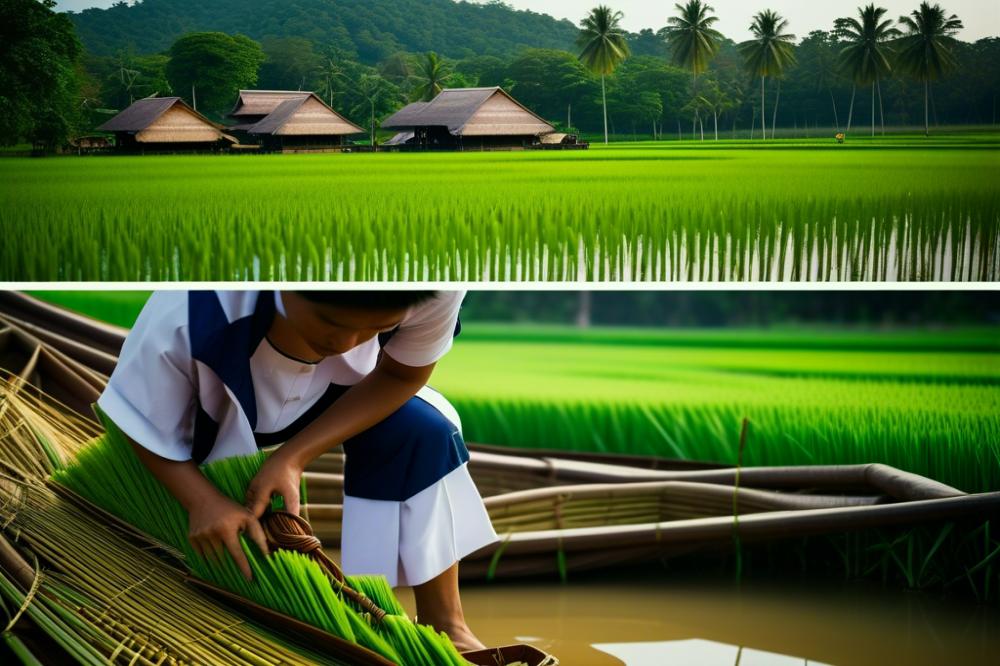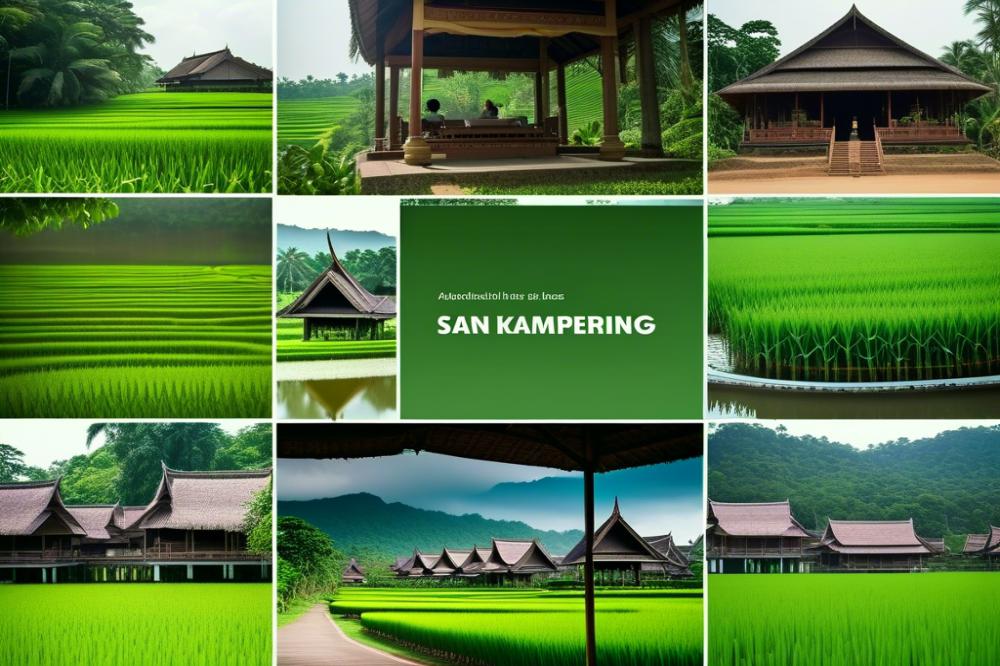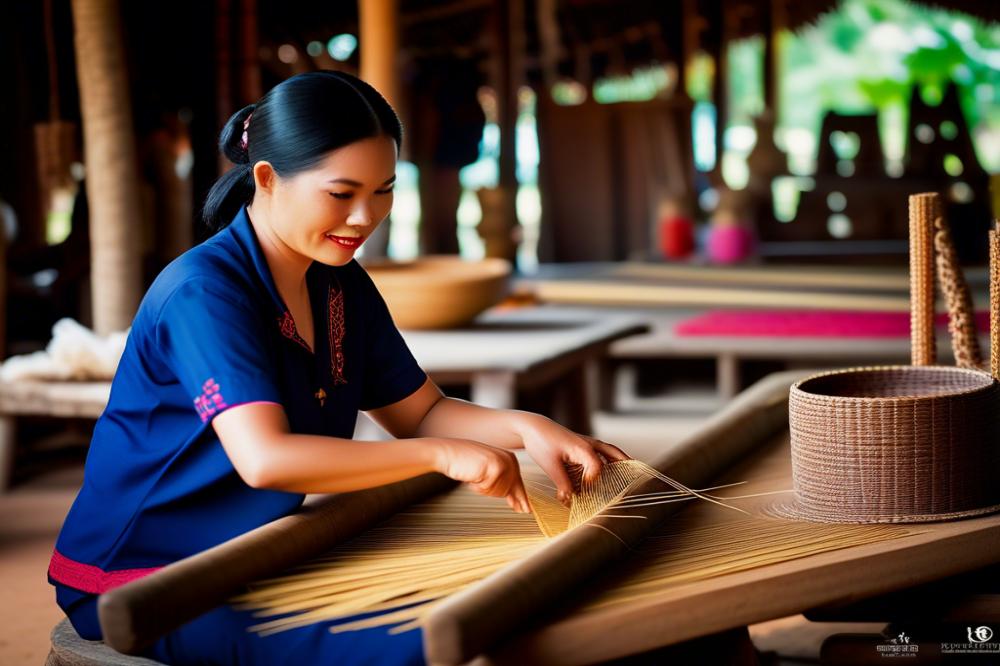Exploring the Handicraft villages of San Kamphaeng
Visiting the handicraft villages near Chiang Mai is a captivating addition to any adventure holiday in Thailand. This region showcases a rich tapestry of Thai culture through its traditional crafts. A sense of history surrounds the artisan communities, where skills are passed down through generations. Each village specializes in unique handicrafts that reflect local heritage and creativity.
Pottery and weaving are among the most celebrated crafts here. When walking through the local markets, visitors can see artists at work. The vibrant colors of the woven textiles and the intricate designs of the pottery both tell a story about the region. Such experiences offer a deeper understanding of the culture that defines this beautiful part of the country.
Handicraft workshops invite tourists to participate, providing a hands-on experience. Learning from skilled artisans allows a rare glimpse into their world. The welcoming spirit of the people adds to the overall charm of the villages. Engaging with local crafts not only enriches the travel experience but also supports sustainable tourism.
Exploring this area is more than just an outing; it is a journey into the heart of traditional Thai life. Each visit leaves travelers with memories of creativity and craftsmanship. The allure of these villages lies in their ability to merge artistic expression with cultural appreciation.
Discovering San Kamphaeng

San Kamphaeng is a notable village in Thailand renowned for its artisan crafts. Nestled just a short drive from the bustling city of Chiang Mai, this community offers a glimpse into the heart of traditional Thai culture. Its location makes it easily accessible, drawing visitors curious about local craftsmanship and heritage.
This village serves as a vibrant hub for various traditional crafts. Pottery and weaving, in particular, are two art forms that thrive here. Skilled artisans dedicate their lives to perfecting these crafts, showcasing the beauty and creativity of their work. Local markets brim with handmade goods, allowing tourists to purchase unique items and support local artists.
Handicraft workshops dot the landscape, where visitors can watch craftspeople in action. In these spaces, the techniques of generations are passed down through hands-on learning. The experience of observing artisans transform raw materials into beautiful products is captivating. It is one way that San Kamphaeng promotes its rich heritage.
Tourism plays a significant role in the economic well-being of the village. Travelers come to experience the culture and buy handmade items. This influx of visitors not only boosts local businesses but also fosters appreciation for the meticulous work involved in traditional crafts. The village’s commitment to preserving its artisanal legacy benefits both residents and tourists alike.
Engaging with the community reveals the stories behind each craft. Artisans are often eager to share their knowledge and passion. Walking through the village is like stepping back in time, where every corner reflects a deep connection to Thai culture. It offers a rare chance to experience the heart and soul of artisanal work in Thailand.
Traditional Crafts of San Kamphaeng

In the village of San Kamphaeng, traditional crafts play a vital role in the community. Artisans showcase an array of skills passed down through generations. Pottery and weaving stand out as two prominent crafts deeply rooted in Thai culture.
Pottery production begins with local clay, which is abundant in the surrounding areas. Artisans mold the clay by hand or use a potter’s wheel to create both functional and decorative pieces. Various techniques, such as coiling and slab construction, are employed to achieve different shapes and designs. After forming the clay, the pottery is fired in kilns, often using wood as fuel, which gives each piece a unique finish. The glazes used are often derived from natural materials, resulting in vibrant colors.
Weaving also holds a significant place in the village’s handicraft scene. Skilled weavers utilize traditional looms to create intricate textiles. Silk and cotton are common materials. These fabrics are dyed using natural dyes, which can include plants and minerals found locally. Weaving techniques vary, helping artisans create patterns that tell stories or represent elements of their culture. Local markets often feature these textiles, showcasing the hard work of the weavers.
Handicraft workshops in the area invite tourists to observe the creation of these crafts firsthand. Visitors can interact with artisans, learning about their techniques and stories. Such experiences deepen appreciation for the skills involved in creating pottery and textiles. The combination of craftsmanship and storytelling adds richness to the cultural experience.
This vibrant community promotes crafts that reflect the history and identity of the region. San Kamphaeng exemplifies the blend of tradition and modernity. Each piece, whether a simple pot or an elaborate textile, holds a piece of the artisan’s heart. The local environment provides not only materials but also inspiration for their work. Engaging with this community offers insight into the enduring legacy of traditional crafts.
Visiting Handicraft Workshops

Tourists can have a remarkable experience visiting the handicraft workshops in the area. Here, artisans work diligently, creating beautiful items that reflect their skills and heritage. Engaging with these craftspeople offers a deep insight into Thai culture and traditions. Many workshops welcome visitors, allowing them to observe the detailed process behind each craft.
In the pottery workshops, guests can watch as pots and sculptures take shape on the wheel. The intense focus of the artisans is clear. Some even allow tourists to try their hands at molding clay, making it an exciting opportunity for hands-on learning. Similarly, weaving workshops showcase vibrant fabrics. The rhythm of the looms creates a soothing sound, drawing visitors into the art of weaving.
Additionally, tourists can ask questions and learn about the history of each craft. Artisans often share personal stories about their techniques and inspirations. Many are eager to teach about the materials they use and the significance of their work in the community. This interaction helps provide a deeper appreciation for the traditional crafts on display.
Some workshops also sell their creations. Local markets often feature products made by these artisans. Tourists can find one-of-a-kind items to take home as memories of their visit. Participating in these experiences creates a connection between visitors and the village. Engaging with the creators fosters a sense of pride in the craftspeople’s talents.
The workshops serve as a wonderful introduction to the region’s cultural heritage. Each artisan plays an integral role in keeping traditions alive. Learning about pottery, weaving, and other crafts in such a personal setting enhances the overall experience. Travelers leave with not just souvenirs, but also stories and newfound respect for the skills of the artisans they meet.
Exploring Local Markets

The local markets in San Kamphaeng are a feast for the senses. Bright colors, lively sounds, and the smell of delicious street food fill the air. Visitors can dive into a world where traditional crafts come to life. These markets offer a wonderful opportunity to witness Thai culture up close.
handicrafts from the village are abundant and varied. You can find beautifully handcrafted pottery that showcases skilled artisans at work. Weaving is another craft that mesmerizes many. Colorful textiles, made with techniques passed down through generations, catch the eye of shoppers.
In the markets, interacting with local artisans adds another layer to the experience. Conversations with these craftspeople reveal stories of their passion for their work. Observing them in their element provides insight into the meticulous methods used to create each piece. There’s something special about knowing you are purchasing directly from the maker.
Many stalls display not just crafts but also tools and materials used in the creation process. This availability allows visitors to learn about the craft. It reflects the hard work and creativity that goes into each item. The markets serve as a vivid reminder of the importance of supporting these traditional crafts.
Tourism in San Kamphaeng thrives on its rich array of handicraft workshops. These workshops invite people to engage actively with the local culture. Many visitors leave the markets with more than just souvenirs; they gain a deeper understanding of the region. Every corner offers something new to discover, making each visit unique.
The Role of Tourism in Preservation
Tourism plays a crucial part in preserving traditional crafts. Visitors flock to the village, eager to see artisans at work. Through their interest, local crafts like pottery and weaving gain new life. This attention provides an important source of income for craft makers. Without this support, many traditional skills might fade away.
Local markets thrive on the influx of tourists. They purchase handmade items which helps sustain the artisans. These transactions not only benefit individual makers but also the entire community. As people explore handicraft workshops, they witness age-old techniques firsthand, creating a deeper appreciation for Thai culture.
Modern influences can sometimes challenge traditional practices. Globalization introduces new styles and materials that may overshadow local crafts. Balancing this influx with the core values of craftsmanship is essential. However, many artisans adapt without losing their traditional roots. They blend contemporary trends with their historical methods, enriching their work.
Tourism encourages dialogue between generations. Older craftsmen share techniques with younger ones, fostering a spirit of learning. This passing down of knowledge maintains the relevance of traditional crafts. Workshops often invite tourists to participate, creating a shared experience. Hands-on activities help visitors connect with the culture on a personal level.
Community involvement remains critical in ensuring that traditions thrive. Festivals highlight local crafts, attracting even more visitors. Such events allow artisans to showcase their talents and share their stories. This sharing reinforces the idea that these crafts are not just products; they are expressions of identity and heritage.
Overall, while the pressures of modern life may bring change, tourism can be a powerful ally. It offers a platform for traditional crafts to flourish. By bringing people together, it nurtures both the artisans and the cultural narratives they embody.
Bringing It All Together
Exploring the handicraft villages of San Kamphaeng is a journey into the heart of Thai heritage. Visitors often find themselves enchanted by the rich traditions and skills displayed by local artisans. Each piece of craftsmanship tells a story that connects the past and present. The vibrant colors and intricate designs serve as a reminder of the artistic depth found in every corner of these communities.
Support for local artisans plays a crucial role in preserving these valuable traditions. When people purchase handmade goods, they help sustain the village’s culture and economy. This support not only empowers craftspeople but also promotes the continued practice of these age-old skills. As a result, the bonds between the crafts and their cultural significance remain intact for future generations.
Wandering through the local workshops, you may feel a sense of connection with the craftsmanship and the people behind it. Conversations with the artisans reveal their dedication to their work and their passion for their heritage. This experience fosters a deep appreciation for the cultural roots embedded in each creation.
Ultimately, these visits are more than just sightseeing. They are enriching encounters that expand one’s understanding of Thai culture. A trip to these villages becomes a meaningful adventure where every purchase holds a story, and every moment spent appreciates the craft’s beauty. In essence, the enchanting world of handicrafts invites all who visit to take part in a unique celebration of tradition and artistry.



